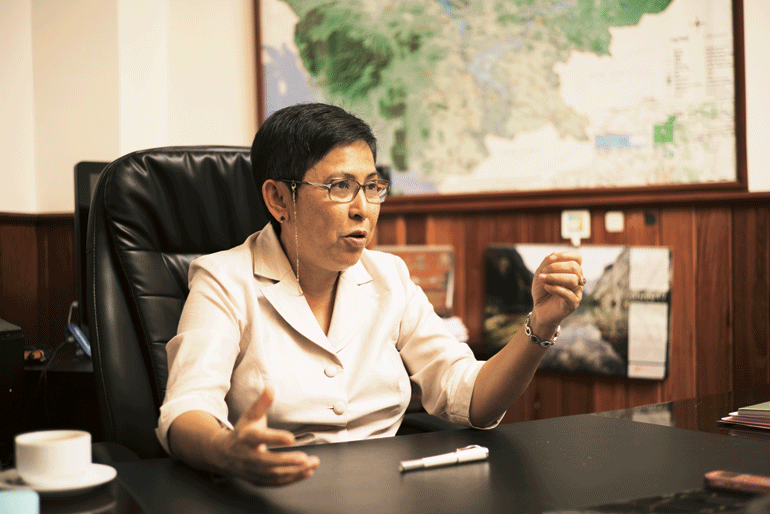Cambodia’s culture minister Phoeurng Sackona discusses the double-edged sword of the nation’s flourishing tourism industry

Are you concerned that growing numbers of tourists to Angkor Wat might damage the cherished heritage site?
Not only Angkor – the concern is everywhere. When you know that tourism will increase, you know there may be some negative impact on the site. A lot of discussion has been done in the International Coordination Committee Angkor to establish a code of conduct, informing the tourists not to touch – not only for tourists but also the people living around there.
Is the Cambodian government relying too much on international organisations and foreign governments to preserve its heritage?
Oh, no. Maybe 20 years or ten years ago we could say that, but it’s not the situation now. We have a lot of cooperation with different countries. Step by step the projects are being conducted by international experts working with the Cambodian team. We’re really conscious that every team working on the preservation and conservation of Angkor includes Cambodian people. It’s not about relying a lot on international assistance – it’s not sustainable to rely on something external.
Do you worry that heritage sites’ attractiveness to tourists sees the local people sidelined in favour of foreign visitors?
No, that’s not the objective of the ministry and not the objective of Unesco either. To the contrary, we want people living around the temple. Because if you only have the temple, you just have a temple of stone – without the spirit. But we must keep the respect. Angkor has never been abandoned. When the Khmer king moved from Angkor to Phnom Penh, Angkor still had people living there. Through the French colonial period, through the Khmer Rouge period, every time, people have lived there. It has become the homeland of the local people. So we allow them to live there, because we would like the Angkor site to be a living site – it’s not a dead site.

